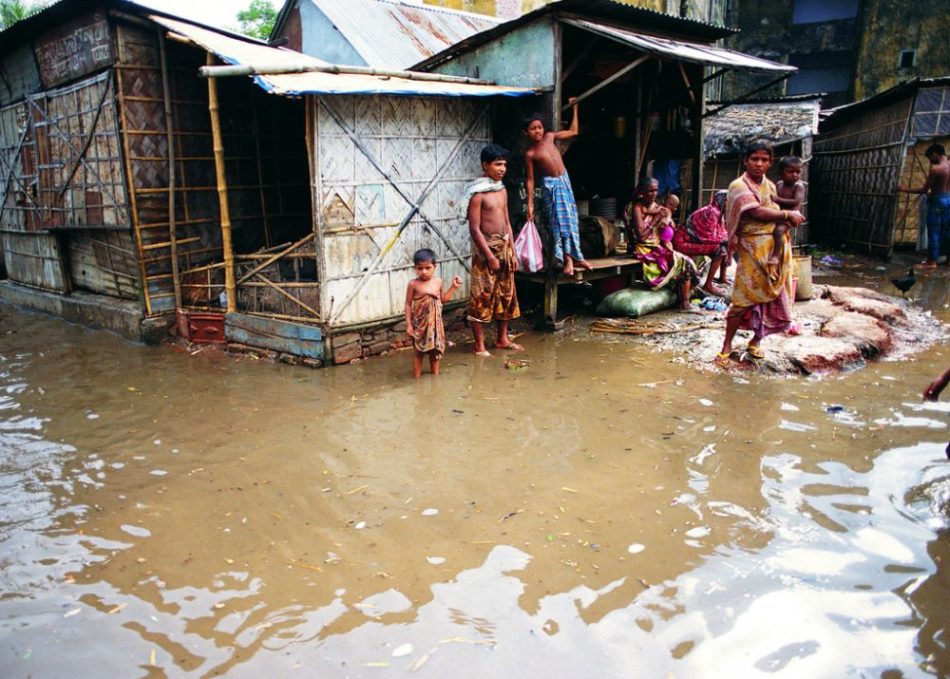The earth is fragile and under the spell of climate transformation due to the changes in the typical climate of the planet in terms of temperature, precipitation, and wind. There is a continual change in the planet’s climate over geological time, with the significant inconsistency of global average temperatures. Mozambique, Zimbabwe Bahamas, Puerto Rico, Myanmar, and Haiti were the most affected countries to date. According to the Global Climate Risk Index (CRI) 2021, Bangladesh is the seventh most climate change vulnerable country (same as last year). The global COVID-19 pandemic has reiterated how risks and vulnerability are systemic and associated. So it is important to strengthen the resilience of the most vulnerable against climate change risk.
The Climate Risk Index 2021 – based on data from 2000 to 2019 – says Bangladesh lost 11,450 people, suffered economic losses worth $3.72 billion, and witnessed 185 extreme weather events from 2000-2019 due to climate change. Bangladesh, the world’s largest delta, has an unfavorable geographic location (proximity to the Bay of Bengal and the Himalayas); flat and low-lying topography; improper river water distribution with India, large population density; poverty-stricken; dependence of millions of livelihoods on climate-sensitive sectors, especially agriculture and fisheries; and inefficient institutional aspects.
Climate change is likely to result in increased flooding, along with rising sea levels, greater monsoon precipitation, and increased glacial melt , vulnerability to cyclone and storm surges, increased moisture stress responsible for the increased drought, salinity intrusion, and greater temperature extremes.
Bangladesh’s socio-economic development is extremely vulnerable to the impact of climate change. The effects of it on the surface and groundwater resources are really alarming as people mostly depend on the surface water for irrigation, fishery, industrial production, navigation and similar other activities. It will create direct pressure on many climate-sensitive species. It has increased erosion and deterioration of soil quality in upland forested areas. It will also affect the distribution of climate-sensitive diseases like malaria. More diseases like dysentery, diarrhea, dengue, hypertension associated with heat stress, asthma and skin diseases are also increasing in Bangladesh.
When a cyclone and floods hit Bangladesh in 1991, the death rate for women was almost five times higher than for men. Women and girls are given the responsibility to hold back during a disaster to protect their children or adults in their care while men sometimes escape. The girls are often unwillingly dropping out of school or missing classes because of household chores. Child marriage is perceived as the only solution as girls are considered an extra burden in times of crisis. Increased natural hazards dismantle people’s properties including land, house, cattle, and other livelihood assets and living essentials.
Overall, the number of Bangladeshis displaced by the varied impacts of climate change could reach 13.3 million by 2050, making it the country’s number-one driver of internal migration, according to a March 2018 World Bank report. It is reported that in coastal areas, people are fragmented, children grow up without fathers, and lifelong neighbors turn against one another over land. As people flee from vulnerable coastal areas, Dhaka, as well as local urban centers, are mostly the destination of migration for them. The city is surrounded by extreme poverty, public health hazards, human trafficking, and other risks, including its own vulnerability to floods.
Bangladesh registered in the United Nations Framework Convention on Climate Change (UNFCCC) in 1992 and ratified it in 1994. The Bangladesh National Adaptation Program Action – NAPA structured an action plan with a series of climate adaptation needs and vulnerabilities, as well as sector-specific costs and benefits. Bangladesh Climate Change Strategy and Action Plan BCCSAP in 2008 have described 44 immediate, short, medium and long-term programs, based on six pillars:
-food security, social protection and health
-comprehensive disaster management
-infrastructure
– research and knowledge management
– mitigation and low carbon development
-capacity building and institutional strengthening
The Bangladesh government integrated climate change into national policies and, as a result, adopted a new 25-year water sector plan in the preparation of disaster preparedness plans. Bangladesh has established a two-tier Designated National Authority (DNA) which has approved four projects in the waste and energy sectors of the country.
A $110 million climate finance contribution of the World Bank’s Pilot Program for Climate Resilience (PPCR) is used for long-term measures in coastal zones, such as roads, embankments, and water supply, infrastructure and GEF/UNDP Coastal Wetland Biodiversity management at Cox’ Bazar and Hakaluki Haor. Bangladesh has received $256.5 million from Green Fund to promote investment through large-scale adoption of energy-efficient technologies. It aims to ensure a zero-carbon policy.
Bangladesh acted to reduce GHG emissions in different sectors. The projects related to climate change by different NGOs (BRAC, CARE, Concern, Red Crescent Society, etc. ) are being implemented, mostly funded by the World Bank. Moreover, The Netherlands will assist Bangladesh implement Delta Plan 2100.
It is projected that by 2050, Bangladesh may lose approximately 11% of its land with a 50 cm rise in sea level. An individual and collaborative global effort is required to control the natural environment as much as we can.
*The writer is a school teacher by profession and quite keen interest in national and international issues. She is based in Bangladesh.
July 29, 2021
The viewpoints expressed by the authors do not necessarily reflect the opinions, viewpoints and editorial policies of Aequitas Review.


